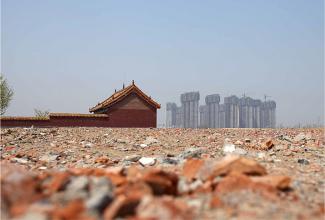
Mapping China: Urbanisation - 1 Rural/Urban Dichotomy
Mapping China: Urbanisation - 1 Rural/Urban Dichotomy
There has been continual improvement in the country’s policy towards rural-urban relations. Still, the rural/urban dichotomy in both the public welfare system and land regulations gives shape to some of China’s most controversial urban spaces, and remains the biggest obstacle in the diminishing social inequality in this country.
The Hukou (Household Registration) system was established in 1958 to stabilise the national agricultural production, dividing the population into two categories, rural and urban households. The Hukou system is still in effect, even though today’s social and economic environment is thoroughly different from that of 1958.
In general, the urban population has access to a much better welfare system, receiving better education and social care services than the rural population does. Besides the welfare system, land regulations also differ between rural and urban areas. Urban land is capitalised through a top-down planning mechanism, which allows land circulation – the transfer of land usage rights – to generate large amount of revenues. The capitalisation of land usage rights in cities has been the driving force of the urban economy in China for the past decade. By contrast, agricultural land and village land is excluded from the land market. For the members of the rural population, the only opportunity to profit from the land market is when the government converts their homestead into urban land. At this point, the evaluation of the property becomes crucial for rural Hukou holders, because once they decided to give up the property they lose their only access to both the land market and the benefit from the revenue it generated.
In an urbanising society, this rural/urban dichotomy has led to a new stratification in China. Rural migrant workers are a marginalised social group generated by the colliding forces of the top-down Hukou policy and market-driven migration flows. At the same time, there have been practices aimed at diminishing such inequality and filling the gaps between rural and urban society, such as Xiang Jian (Village-Building) and the thriving urban farms.


